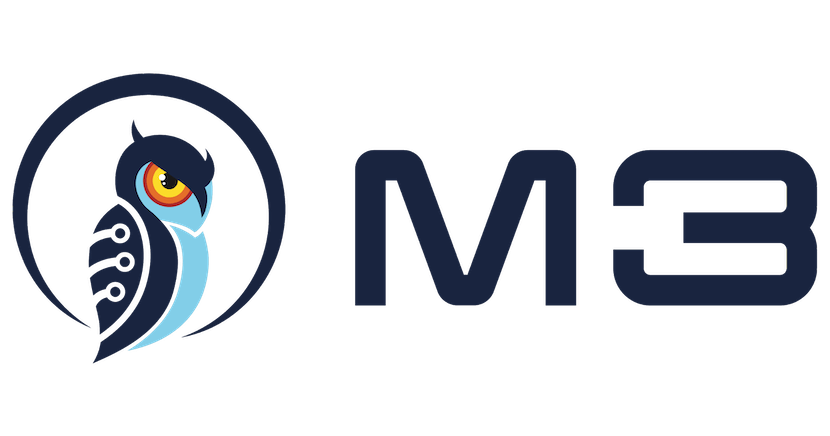
Managed Databases for M3 Aggregator
Deploy an M3 Aggregator architecture dedicated to aggregating streams, and free up resources on your M3DB database. It also integrates the streams directly into your metrics workflow. When data streams from the same time series database come from multiple sources (e.g. multiple workloads contributing to a single metric), your data needs to be aggregated to provide relevant analysis and efficient storage. An M3 Aggregator deployment will be directly compatible with your M3DB database, and will spare you the task of managing this type of infrastructure.
Full integration with your M3DB database
The M3 Aggregator connects directly to your M3DB databases in order to manage the streams that require aggregation. The M3 Aggregator cluster optimises and streamlines streams, before eventually redistributing them to M3DB for long-term storage.
Free up resources on your M3DB database
By moving the aggregation of streams, you can free up the M3DB cluster from a resource-intensive task. This means you can size your M3 Aggregator deployment independently from your M3DB sizing — and you can do this, regardless of the amount of aggregation to be performed.
High availability and resilience
Like M3DB, the M3 Aggregator is designed to manage high availability across multiple nodes, as well as scalability and data resilience.
Compare our Managed Databases for M3 Aggregator packs
| Business | Enterprise | |
| Number of nodes | 3 nodes included | 6 nodes included |
| RAM per node | 7GB to 120GB | 15GB to 120GB |
| Service Level Agreement (SLA) | 99.90% | 99.95% |
| Switching between different solutions | Yes | Yes |
| Updates to new major versions in 1 click | Yes | Yes |
| Data encryption at rest and in transit (SSL) | Yes | Yes |
| Performance graph | Yes | Yes |
| Terraform Provider support (more information) | Yes | Yes |
| High availability | Yes | Yes |
| Private network connectivity (vRack) | Yes | Yes |
Managed Databases for M3 Aggregator use cases
IT metrics aggregation
With the proliferation of services and the sub-division of microservices, metrics come from a growing number of sources, and often require reorganisation to be usable. Whether its purpose is to analyse an infrastructure’s past behaviour or shed light on future trends, data must first be aggregated to optimise the effectiveness of analysis tools.
Weather metrics aggregation
Organising data — like climate data collected by weather stations, for example — presents a real challenge as it is very resource-intensive. By offloading the streams to be aggregated into a dedicated infrastructure, you are guaranteed to process this data quickly, in accordance with the rules you have defined.
Workload reduction on an M3DB database
Data aggregation processes can overload your M3DB database, and slow down its usual speed. By deploying an M3 Aggregator cluster, you can ensure that your M3DB database responds to requests as expected.
Documentation and guides
Do you need support getting started with your service? Check out our tutorials and documentation.
Find out how to order a Managed Databases for M3 Aggregator service via the API.
Features
Standardisation and optimisation
Aggregation rules managed by etcd before flushing
The rules you are about to set up are shared within the cluster using etcd. Once it is applied, the aggregated data is pushed into your M3DB database.
TLS encryption
Transactions to M3 Aggregator are transferred by HTTPS protocol, which ensures transaction security on data transport and service identification.
Terraform support
Save time by automating your deployments. With support for Terraform tools and APIs, you can provision your databases automatically, with the option to maintain multiple environments for your application.
Enterprise-grade
Designed for load balancing
The M3 Aggregator is designed to scale horizontally, so you can add nodes as required. This way, the workload is automatically distributed across the cluster nodes, and you do not need to add more systems.
High availability
You can ensure optimal resilience for your data, with triple synchronous data replication and consistency checks that can be adjusted to suit your needs.
Designed for heavy workloads
M3DB and M3 Aggregator were designed to fill a gap in the market. For the most part, time series databases are limited, and cannot accommodate really large workloads. With M3DB and M3 Aggregator, some deployments host one billion datapoints per second in write mode, while providing more than two billion datapoints in read mode.
Private network connectivity (vRack)
With our Business and Enterprise packs, you can restrict access to your database service via our private network, You also get up to 2Gbit/s bandwidth.

Managed Databases for M3 Aggregator pricing
You receive a bill at the end of each month, which is calculated based on your database usage per hour. The price depends on the pack you have chosen: Business or Enterprise.
Other products
Your questions answered
What is M3 Aggregator?
M3 Aggregator is a process dedicated to data aggregation for the M3DB open-source time series database.
What is the difference between M3DB and M3 Aggregator?
M3DB is a scalable time series database. One of its removable components is called M3 Aggregator. The two components work together.
Why use M3 Aggregator?
Among other reasons, M3 Aggregator is perfect for:
- Reducing the workload associated with aggregation on your M3DB cluster.
- Providing a first level of data aggregation from a large number of different sources.
What is Managed Databases for M3 Aggregator?
Managed Databases for M3 Aggregator is a managed service on our Public Cloud. Its purpose is to save you time, since we take care of your database’s management and administration.
Can I install M3 Aggregator on Public Cloud instances myself?
You can indeed do this. However, you will need to manage and administer the database, and you will not benefit from the capabilities we provide in our turn-key service.
What is the difference between the Business and Enterprise service options?
Each pack includes different features for various uses. Among other factors, they do not all have the same benefits or the same level of availability.
Can I migrate to nodes with a higher capacity?
You can do this if you need more RAM. However, you cannot revert to a lower-capacity node.
Can this solution be integrated into a Public Cloud project?
Yes, our service can be used as a resource, or as part of a Public Cloud infrastructure. You can manage it from the OVHcloud Control Panel or the OVHcloud API. We also offer managed services for managing relational databases (SQL), such as MySQL and PostgreSQL, and non-relational databases (NoSQL), such as Redis and MongoDB.
Is M3 Aggregator open-source?
The use of M3 components is governed by the open-source Apache License version 2.0. This licence authorises the modification and distribution of the code in free or proprietary form, free or commercial, and requires preservation of the copyright notice upon any modification, with a copy of the licence to be provided with the source code.


